Auto Tagging allows the users to search for items of their choice and have them classified under relevant categories. The service is beneficial if you want your website to be more visible in search results and increase the number of visits to your website. Auto Tagging also provides the opportunity for webmasters to create more interactive content for their users.
The idea behind “Auto Tagging” is to create a site with relevant content placed automatically in the appropriate categories on the search engine results pages. Google recommends the use of “keywords” in your title tags and image tags. Keyword-rich titles and images can help in achieving better visibility for your website in search results. You can also use the HTML Meta tag for the same purpose.
When the user searches for a keyword, these keywords will show in the search results, according to the keywords used in your meta tags. You can also use Auto Tagging Google analytics services for generating sales leads.
Many people use Google Auto tagging to automatically increase their CTR (click-through rate), which is the percentage of people who click on your ad vs. people who just leave the page without clicking on your ad. Google’s CEO Eric Schmidt did an interview with Digital Point and mentioned that one of his motivations for creating Google was to make advertising more relevant and targeted.
When you offer tailored ads, people will be more inclined to buy from you. The problem was that until Google had really started to adopt a more personalized targeting, like with their Knowledge Graph, things haven’t really changed that much.
You can specify how many times you want the keyword to appear for each click-through. In theory, this could lead to better results for your PPC (pay-per-click) campaigns.
Problems With The Auto Tagging Google Ads Method
Google introduced a new feature to make it easier for its advertisers to get the most from their campaigns. The tracking feature allows an advertiser to enter in some basic, generic information about their ad and then track where clicks happen, how many impressions or views occur, and many other details.
Google AdWord includes an entire dashboard devoted to tracking, complete with detailed reports. It also includes Google Click ID (GCLID) values, which Google uses to determine how much of an impact a certain keyword has on a campaign. This makes tracking much easier, but it doesn’t allow manual tagging. For example:
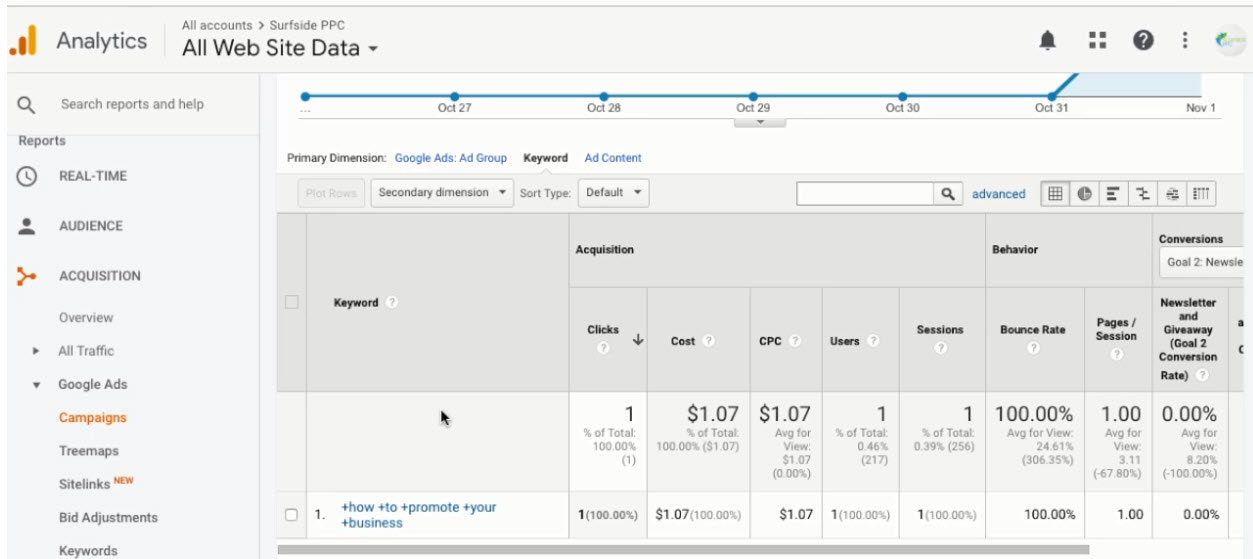
(Image Credit: Surfside PPC)
Manual tagging is something that experts strongly support because it gives you so much control over your ads. A third-party ad tracker can only track a limited number of keyword tags, making it difficult to decipher what is happening. With Google Tag Manager, you can create and manage up to 15 GCLID tags and a wide variety of unique characters. You can even combine tags with UTM parameters to allow more customization. What’s more, with the use of Google Custom Ads, you can specify which advertising networks will display your advertisements, control where your ads show up, and more.
Google will likely change manual tagging in the next major release of its core platform. The last thing that Google needs is for their brand names and individual ads to become associated with spam. Google has a reputation for providing excellent search results and providing great user experiences, and that reputation is only going to increase in the future. People are typing in phrases into the Google search bar thousands of times every single day. If Google starts allowing “spam tags,” they will do whatever is necessary to ensure that their results provide the most relevant search results.
So what does Google have to lose by introducing a future where the “spam tag” is an optional feature? Nothing really, unless you want to pay for custom tags. If you want to avoid the manual tagging process altogether, you’ll just have to type in your own terms instead of having Google randomly selected from the millions of potential terms. For instance:
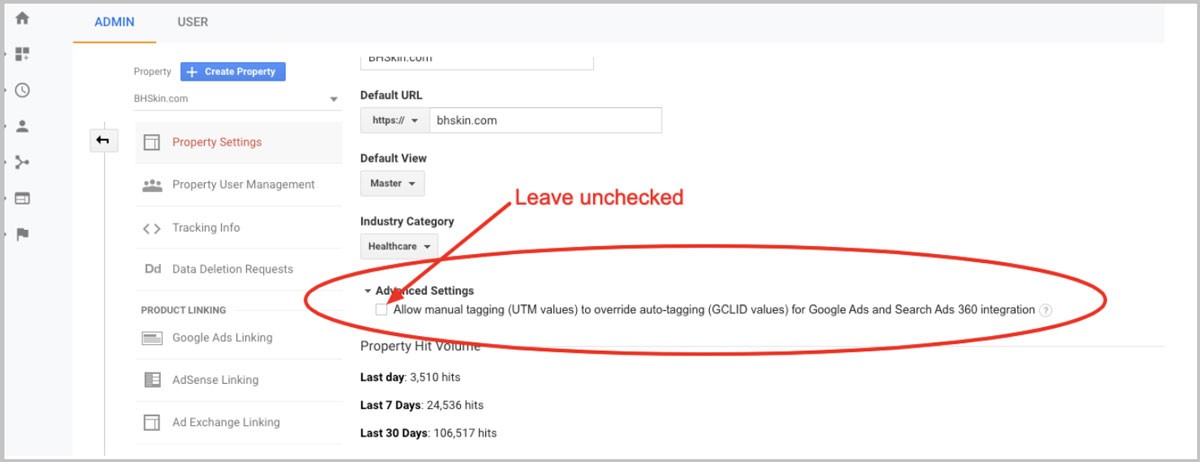
(Image Credit: McGaw.io)
Google has said that they will be releasing an update to its current Tag Management system very soon. Suppose the update does anything other than improving the experience of using Google’s existing programs. In that case, it will be completely backward compatible with the new “Google Tag” programs that will be coming to market in the next few years. Don’t let the future catch you unaware because it will before too long.
We can set-up and optimize your Google Ads for you but let’s also test your website’s SEO potential. Takes 60 seconds!
Paying for traffic is an important way for many businesses to grow but ranking naturally in Google for your important keywords is free. While Diib helps 1000s of businesses grow with Google Ads management, Diib is also one of the best SEO tools in the world and uses the power of big data to help you quickly and easily increase your traffic and rankings. Diib will even let you know if you already deserve to rank higher for certain keywords. As seen in Entrepreneur!
- Over 500,000 global members
- Keyword and backlink monitoring + ideas
- Built-in benchmarking and competitor analysis
- Easy-to-use automated SEO tool
- Speed, security, + Core Vitals tracking
- Too busy for SEO? Diib’s Growth Experts can set-up and optimize your ads!
Used by over 500k companies and organizations:
Syncs with 
You Might Also Like
Benefits Of Google AdSense Auto-Tagging – Analytics Help
One of the best things about Google AdSense is that it’s easy to use and really provides all the features you’d want. For example, all you need to do is click on a specific ad, wait for a second or two, and your website or blog site will automatically be in the relevant category or search engine based on a keyword or phrase you entered in the search box. So, if you were searching for information on autism, you could type in “autism” or” autistic disorder,” and Google would place your site on a related search engine for those who search for that term. The benefits of Google AdSense are getting out there and used by more Internet marketers as time goes by.
If you haven’t started using AdSense yet, then it’s high time you did. If you have used the service before, but the costs have been a bit too much for you, then it’s time to get a couple of things under control.
Optimizing Your Website With Google Ads Auto Tagging
Google has long known that it’s a better way to find what people are searching for. It does this by collecting information from websites, blogs, and more. After categorizing the information, Google sorts it into various groups. Sites that fall in a particular group are frequently targeted by Google, meaning they will appear higher in search results.
For example, if your site sells an iPod, Google will target the term “iPod” when a person searches for it. The benefit is that your site will show up more often, even when someone is searching for something unrelated to what you are selling. In other words, your site should be a good fit for the search term or phrases someone is likely to type into the search engine.
Using auto tagging Google Analytics isn’t always perfect, though. For your site to appear on Google, it must meet certain requirements. First, it needs to be relevant to the keywords searched for. You can verify this by performing keyword research. Then, it must rank well. For the most part, Google uses a special algorithm to determine how high it should rank. You can perform keyword research using tools such as this one called KWFinder:
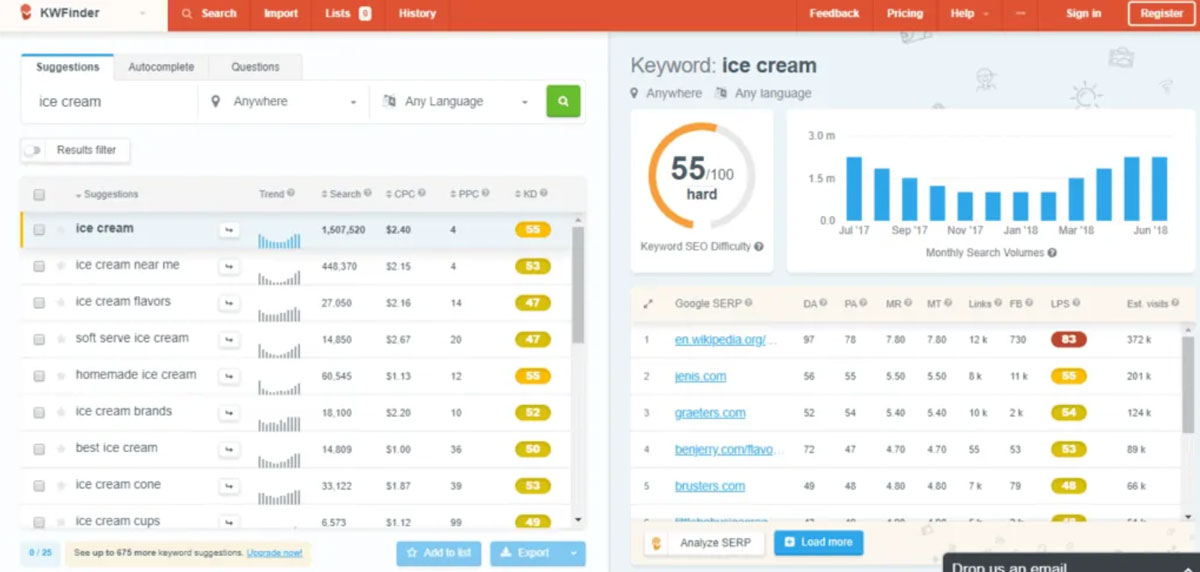
(Image Credit: Twinword)
Most search results displayed depend on how many times a user searches a particular keyword or phrase. However, Google also takes into consideration any variations of that term. Google looks at the variations in the words used (in conjunction with the spelling) to determine which terms are most relevant.
Another factor affecting Google Ads auto tagging is how many times a user has clicked on the Google logo in the past. This is the “link juice,” and it shows how much authority Google recognizes your site when associated with that brand. It also shows how much trust users have in Google.
It will be more difficult to compete if your site doesn’t have loads of relevant content. You can test this out by creating and submitting different versions of your page to various search engines and track which ones are getting the best results. This way, you can learn how to optimize your page for a particular search term and what types of words or phrases to bring the most traffic.
Google Auto – Tagging Tools
Google offers many great tools for managing the number of relevant keywords you have on your website. All you have to do is go to the main Google website, and you will see what Auto-tagging options are available to you. You can also learn more about Google Webmaster Tools (GWT) at Google Webmaster Central.
There are many other ways you can use Google Auto-Tagging to promote your site. The best way to think about it is it works like search engine optimization for content. You want to get your site ranked high in the Google organic rankings. The goal of this strategy is to get visitors to click on your links. As you build up the links pointing to your site, you will rank higher and faster.
If you own a site that already has Google AdSense installed, you may want to tweak the settings so that you can include more relevant keywords. Google will still consider your current site to be relevant if you have additional relevant tags. You can create new tags and assign them to your pages. You can also create tags that are specific to individual keywords. Then you will only apply those keywords to the text in that particular tag. Here is where you need to go to create a new tag:
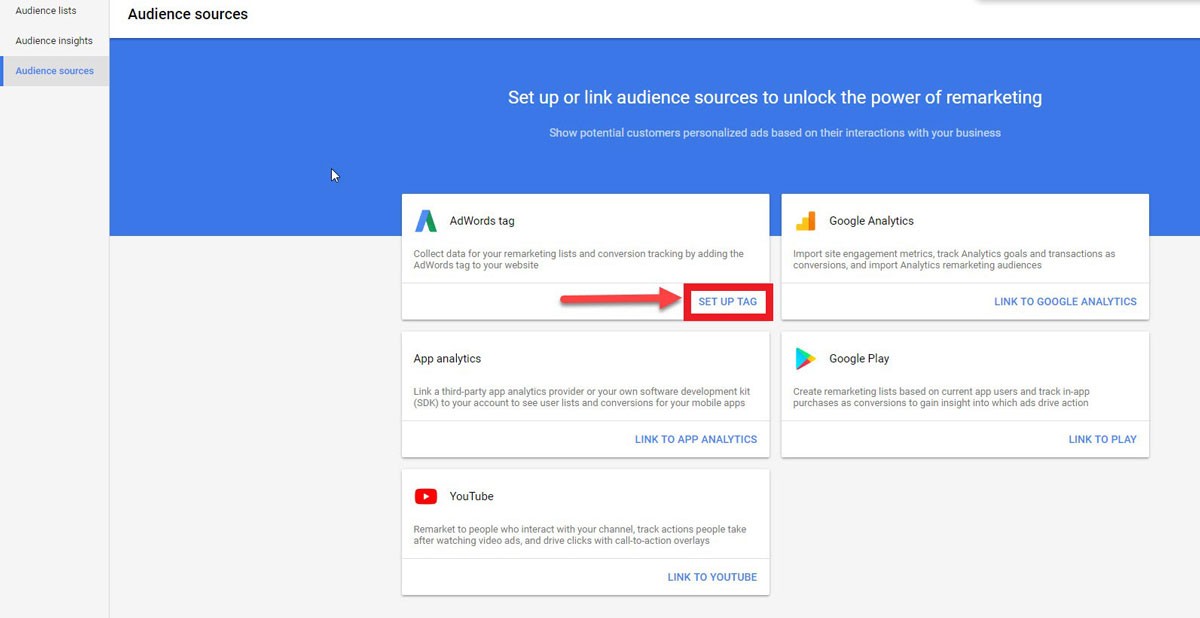
(Image Credit: FeedArmy)
The only problem with using Google Auto-tagging for your content is that it doesn’t tell you if the keywords you’ve used are still relevant. This means that some of your targeted traffic may not end up finding your site at all because the Google algorithms just don’t know what to do with your tags. The best solution is to make sure that you include the relevant tags in all of your content. You also need to make sure that the tags matching the keywords you’ve chosen for your site are all in the same category. If not, Google won’t be able to give your site any relevance.
At the very least, you’ll want to try to keep your keywords as related as possible to your main keywords. You can do this by ensuring that your page titles contain words or phrases similar to your main keywords. Also, make sure that your Meta tags and anchor text contain your main keywords as well. Finally, use your best judgment when it comes to using Google Auto Detailing to optimize your website.
How To Google ads enable Auto Tagging in the AdWords Interface
To enable auto tagging Google Ads in the AdWords interface, just apply the following steps:
- Sign in to your Google AdWords account.
- Select all campaign categories on the left-hand navigation panel.
- Click on Settings from the page’s upper right corner.
- On the bottom of the Results and Sponsors pane, click on Tags. This will bring up a list of popular keywords related to your products or services.
- Then you can Click on Iced Coffee in the Select box around Iced Coffee in the Relevance column and click on Save.
- Change your ad’s name according to what you would like people to call it when surfing through Google.
- Click the Edit button and enter the required information for the name. Be sure to include at least one of the words you want people to search for when they type the name into the search box.
- Click the Save button. Your ad has now changed, and you can see it in Google.
- If you have several variations of an ad such as Iced Coffee with Munch, change each word to match.
- Repeat this process for each variation of Iced Coffee with Munch and each of your ad variations.
- Make sure to include all the relevant information, i.e., country, city, brands, product name, price tag, etc.
- Change the location, too, if it differs from your main ad text.
- You will need to click on the More Options Tab in the main Google search box and scroll to the bottom of the page.
- Select the Services option and scroll down to Shopping Cart.
- Click the AutoTagger option.
- Then, under the Affiliate Products section, click the dropdown arrow next to Shopping Cart in the Tagged column.
- Change the AutoTagger key to apply the appropriate image to the tagged image field.
- You will need to scroll down to the Results row, click on the dropdown arrow next to Page Title and enter the title of your webpage.
- Under AutoTagger, click the dropdown next to Text to Speech and scroll to Voiceover.
- Then click on the dropdown next to Play Now and enter the phrase you want the software to playback, i.e., “Play Now.” Finally, click, OK.
We hope that you found this article useful.
If you want to know more interesting about your site health, get personal recommendations and alerts, scan your website by Diib. It only takes 60 seconds.
Google AdWords Content Network
When you are happy with how the AutoTagger looks on your website, the last step is to select it from the Google AdWords Content Network, as shown in the earlier section. Upon entering some information about your site, the boxes surrounding each category will change to indicate the type of content available. If you have not yet created any content, then select No. from the available boxes. In the AutoTagger dialogue box, click Browse, and the search results will appear.
Click on any of the boxes, and a new preview window will appear. Then, click on New Video and upload the file. Use the buttons available to add text to the video, adjust its length and colors if you wish. Close the resulting box and the Content Network. You can now return to the Google AdWords Content Network and click the Play button to start watching your own video advertisement.
After you have finished uploading your content, you can go ahead to set the AutoTagger’s preferences. Click on the Advanced tab and choose the relevant options for your website. Click OK to Google ads enable auto tagging.
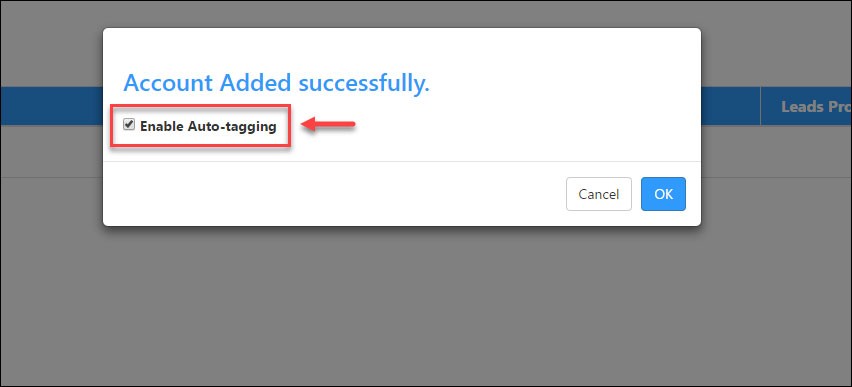
(Image Credit: LeadSquared Help and Support)
Each time a user clicks on an advertisement, the AutoTagger database records a new reference. The recording will be of the website’s particular URL. When you visit the website, if AutoTagger detects relevant tagged items, it will automatically update the reference count on the fly. Thus, each time someone clicks on an advertisement, it will show the related entry on the right-hand side of the browser window.
The Google development team is constantly improving its AdWords Content Network tool. This is why Google AdWords Content Network is such a popular advertising program with website owners. You should take advantage of this service by including the Google AdWords content in your marketing toolkit. It will help you generate more targeted traffic to your website.
Check Your Google Ads Auto Tagging Stats with Diib®!
Google auto tagging is very easy to set up and can effectively drive targeted traffic to your website or blog. The more relevant the content of your ads, the better they will perform. Partnering with Diib Digital will give you an added measure of confidence in your Google Ads Auto-tagging campaigns. Here are some of the features of our User Dashboard you’re sure to appreciate:
- Google Ad Manager integration
- Comprehensive dashboard with website and social stats.
- Keyword, backlink, and indexing monitoring and tracking tools
- User experience and mobile speed optimization
- Bounce rate monitoring and repair
- Broken pages where you have backlinks (404 checker)
- Technical SEO monitoring
Call 800-303-3510 to get in contact with one of our highly skilled growth experts or click here for our free 60 second site scan today!
FAQ’s
This is a feature that allows you to automatically add a parameter to your URLs to aid in tracking offline conversions and report your ad performance to Google Analytics.
- Sign in to your Google Ads account.
- In the left page menu, click Settings.
- Click Account settings.
- Click the Auto-tagging section.
- To enable auto-tagging, click to check the box next to “Tag the URL that people click through from my ad.”
- Click Save.
This will attach the Google Click Identifier, or GCLID, to the URL a customer clicks on, giving you a good idea of which ad performs well and which ones don’t.
Click the campaign you want to edit. Under “Additional settings”, select Campaign URL options. Next to “Custom parameter,” enter the name and value of your custom parameters. Click Save. (Credit: Google Support)
This template allows you to track information such as: ad group, campaign, account level that applies to all ads in a corresponding ad group campaign or account.



